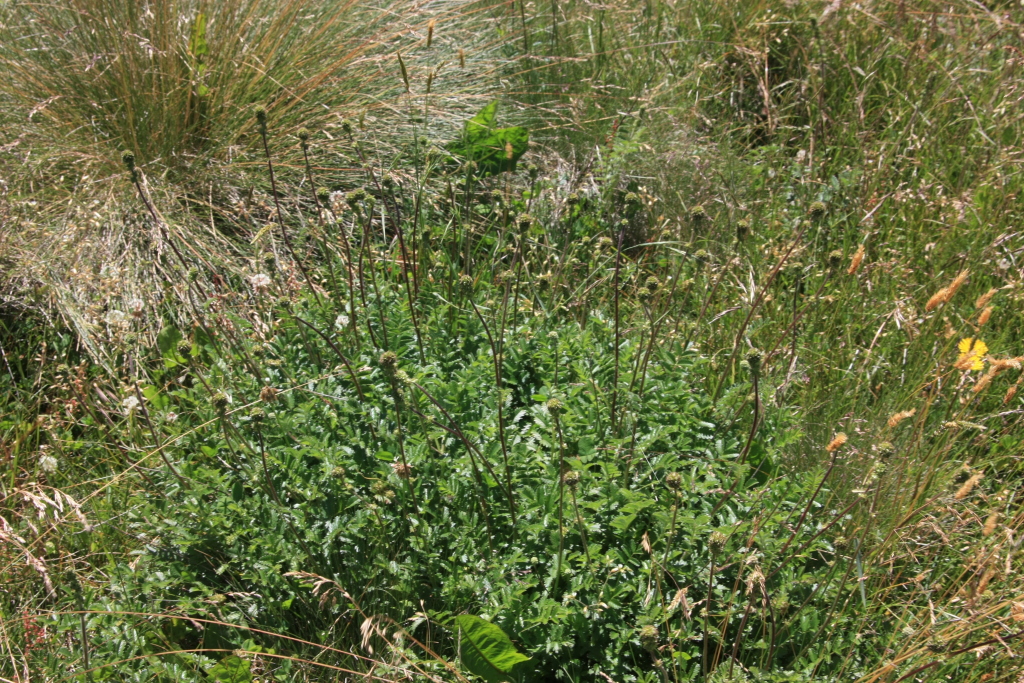Acaena ×anserovina
Orchard Hybrid BurrErect, clumping, non-stoloniferous, perennial herb to c. 40 cm high; branches glabrous to sparsely hairy. Leaves 11–17-foliolate, narrowly obovate to oblanceolate in outline, 6–13 cm long; leaflets more or less obovate, the largest 8–20 mm long, 5–10 mm wide, margins deeply lobed, recurved, upper surface shiny green and glabrous, lower surface glaucous, sparsely pilose, mostly on veins and margins; stipules entire to 3-lobed, 2–6 mm long. Inflorescence globose or ovoid, 4–15 mm diam., a few flowers scattered along the peduncle and in upper leaf axils; peduncles pilose; sepals 4 or 5; stamens 2–5, dark purple to cream; style 1, white. Fruiting head as for flowering head, 10–25 mm diam.; fruiting hypanthia globular, obovoid or obconical, pilose; spines unequal, 3–6 near apex 2–5 mm long, 10–20 lower down 0.5–2 mm long. Flowers and fruits Sep.–Apr.
Wim, GleP, Brid, VVP, OtP, CVU, GGr, DunT, NIS, EGU, HSF, HNF, MonT, VAlp. Also SA, NSW, Tas. Widespread throughout higher rainfall parts of Victoria.
A presumed hybrid between A. novae-zelandiae and any of the spicate-flowered species (i.e. A. agnipila, A. echinata and A. ovina), likely to occur wherever the species grow together. Acaena novae-zelandiae appears to be the female parent (Orchard 1969).
Jeanes, J.A.; Jobson, P.C. (1996). Rosaceae. In: Walsh, N.G.; Entwisle, T.J., Flora of Victoria Vol. 3, Dicotyledons Winteraceae to Myrtaceae, pp. 556–585. Inkata Press, Melbourne.
 Spinning
Spinning